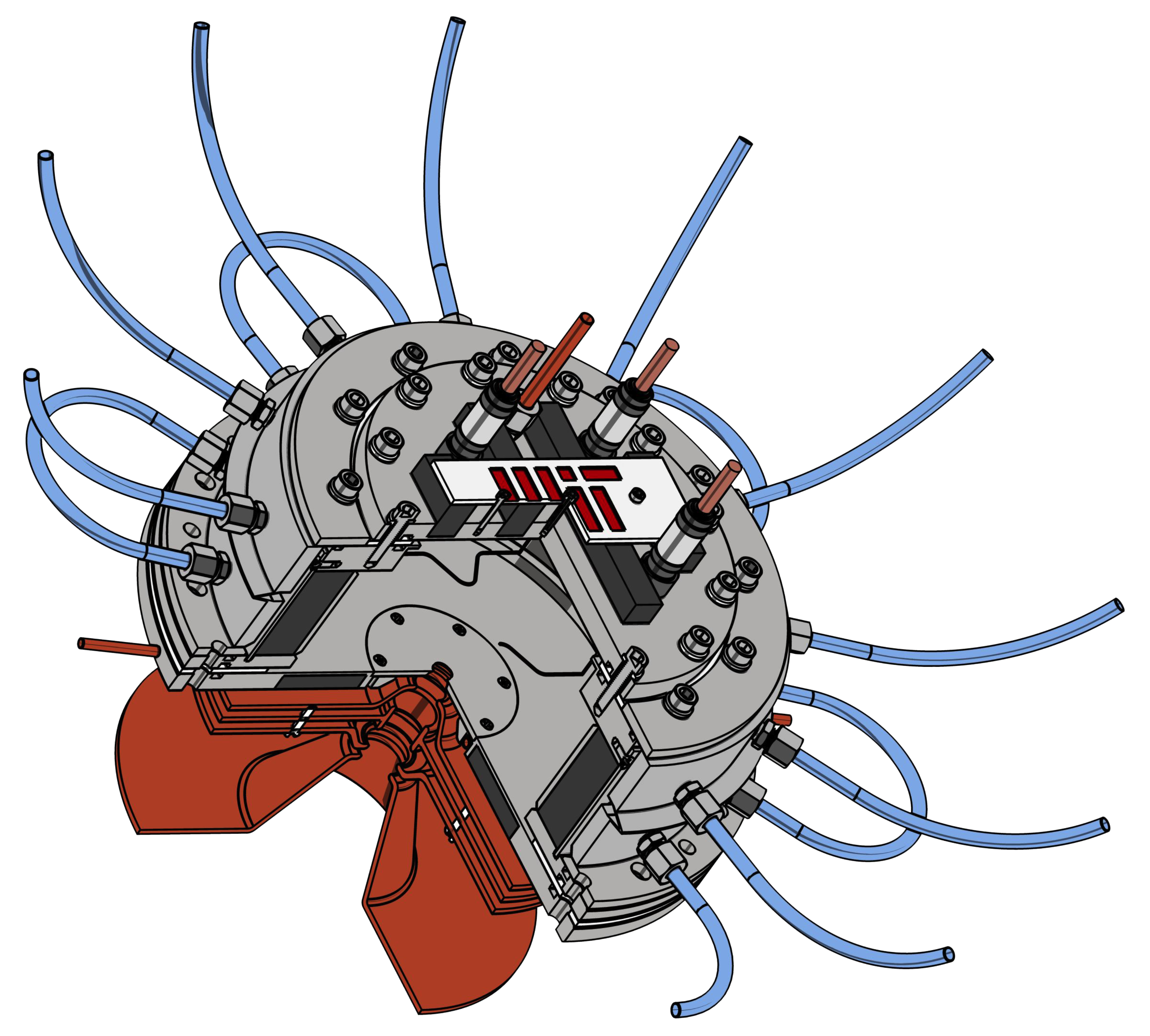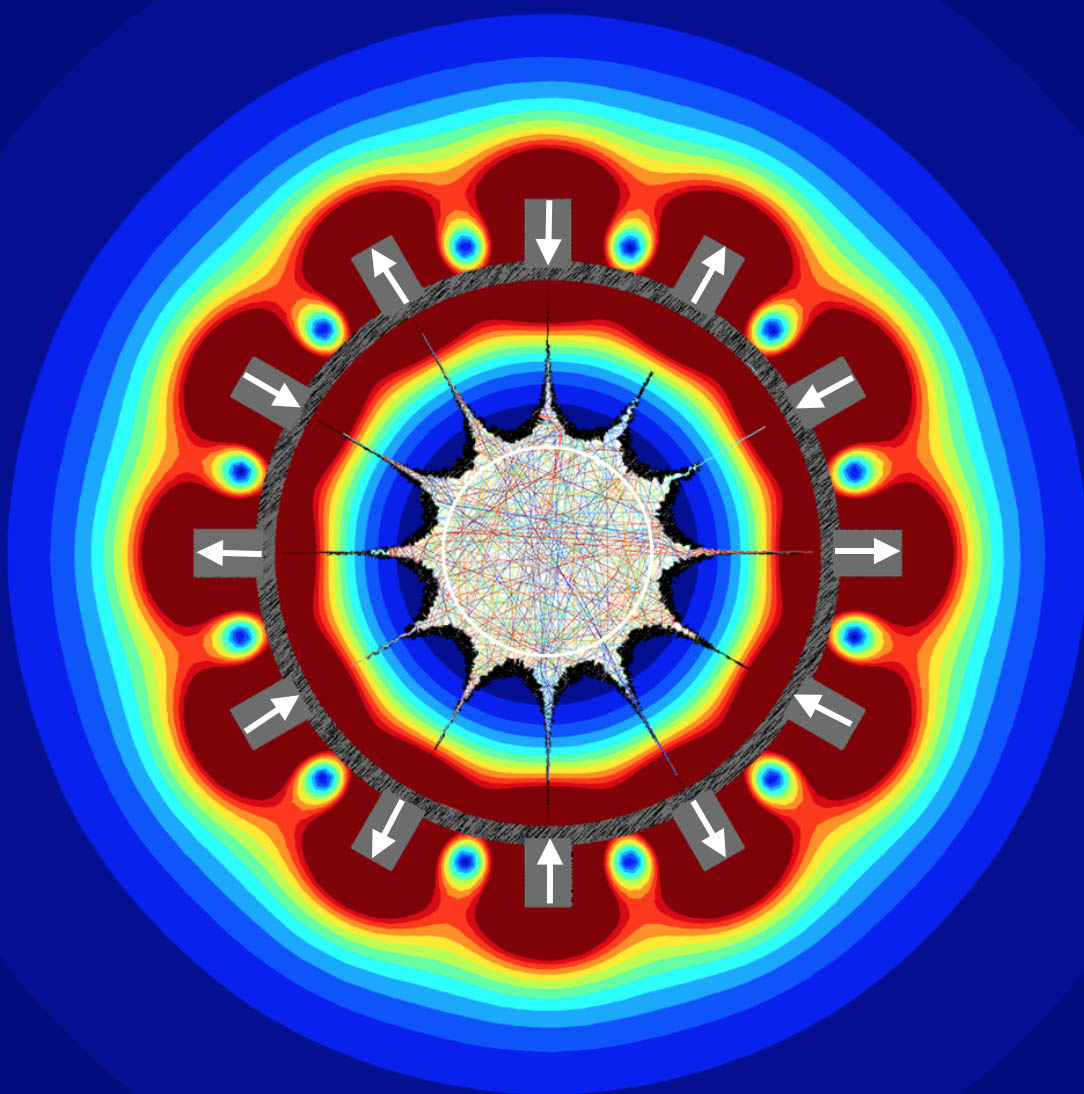


While the VIS ion source design can be reconfigured to provide more current to, in principle, reach the required levels, a past multicusp design appears to be a very promising alternative. To this end, with NSF PA funding, the MIT group is now constructing a multi-cusp ion source similar to one that was developed at LBL in 1983, that demonstrated a very high H2+ fraction, and a current density of 110 mA/cm2 . This would meet our goals of 33 to 50 mA. This new multicusp source, owned by and located at MIT, would be the source used in the RFQ injection tests. The new Multicusp Ion Source at MIT (MIST-1), is currently being constructed with reconfigurable back and front plates to test different plasma heating methods (hot filament, RF antenna, 2.45 GHz microwaves) for optimum long-term stability.

The multicusp field is created by placing samarium cobalt (Sm2Co17) permanent magnets radially around the plasma chamber and on the front and back plates. Multicusp magnet configurations investigated in the past have indicated that the longitudinal magnet arrangement produces a much larger H2+ content. Therefore, our multicusp field will be generated by magnets aligned longitudinally, with the magnetic field pointing in the radial direction. The front plate houses 12 8×8×45 mm3 magnets, arranged such that the dipole direction is axial. The magnetic flux generated by these magnets shields the front plate from the plasma, but there is a magnetic-field-free zone around the center of the front plate (extraction hole). The magnetic field configurations were studied using the COMSOL Multiphysics Static Magnetic Fields code, a finite element analysis software package used for simulating and solving various physics and engineering problems.
